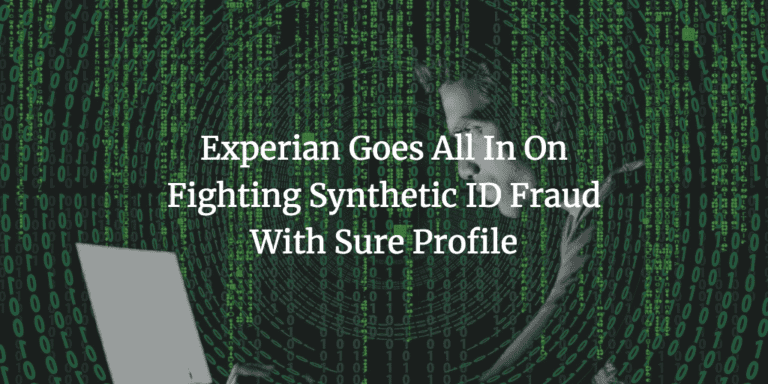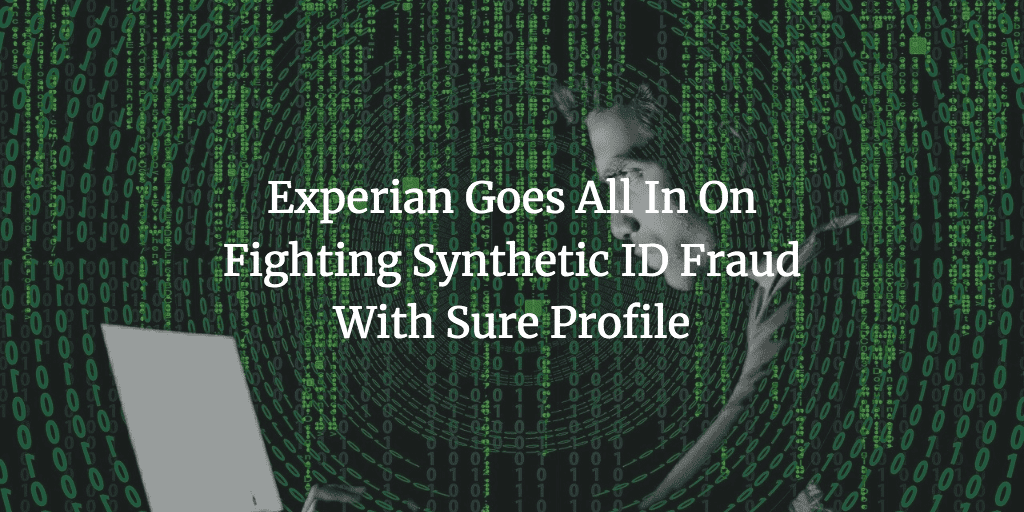Synthetic identity fraud has been on the rise for many years. As fraudsters become ever more sophisticated it is becoming more difficult to identify legitimate consumers. At the same time consumers are demanding a more frictionless borrowing experience putting lenders in a difficult spot. Enter Experian’s new Sure Profile offering that was released just last month.
First let’s try to define synthetic identity fraud. As the name implies it is the creation of a false identity but typically done using pieces of valid information. So, there is a real social security number but with false personally identifying information. Often this other information is actually valid, as in a real address, real name and real phone number but the combination does not match with any one person.
There have been many efforts to fight synthetic identity fraud over the last decade, but I don’t think any initiative is more aggressive than Experian’s new Sure Profile. I spoke with Alex Lintner, Group President for Consumer Information Services at Experian, to find out more about this new program.
Sure Profile is a New Approach to Synthetic Identity Fraud
The first point Alex made is that synthetic fraud has seen a significant increase during the pandemic but Sure Profile actually predates the crisis. It began life about eighteen months ago driven by lender demand for a better solution given the rise in the level of fraud sophistication. Nobody had really solved the issue of synthetic fraud yet and the problem was growing for most online lenders. While Sure Profile entered beta in January they accelerated the public release because of demand from lenders for a better solution now.
Sure Profile is an integrated fraud offering that leverages Experian’s Ascend Identity Platform. It creates a new credit profile that is powered by their newly developed machine learning models. Sure Profile aggregates identity information and analyzes relevant behaviors to predict synthetic identity fraud traits. They have coverage on more than 220 million consumers with data points that are constantly being updated.
For most consumers, Alex says between 85-95% of their database, they can guarantee the identity is real. For those inquiries that pose a synthetic identity risk they will work with their lender partners to determine a risk segmentation. The lender can then decide what additional action to take, whether it will be to decline the loan request, ask for additional information or even require biometric data to confirm an identity.
Skin in the Game
What is most unique about Sure Profile is that if Experian is wrong and an assured account is charged off due to synthetic fraud, Experian will help their clients cover losses. This goes to show how confident they are with this new offering that they have true skin in the game. They are the first and only company to assure credit losses of synthetic identity fraud.
Experian will triage all available information, obviously including credit data, but also bringing in other alternative data such as rent information, utility data and employment history to name a few.
The types of credit products Experian is targeting for Sure Profile are personal loans and credit cards. Synthetic fraud tends to concentrate where there is comprehensive end to end online offerings.
How Synthetic Fraud Works
I was unaware of the level of sophistication and patience that the fraudsters have today. Alex shared some details of how they operate which I found fascinating. They will often start by creating a bank account using these new “identities” that have been cobbled together using various parts of real identities.
These bank accounts then have real activity often over a several year period. They will take out small dollar loans and pay them back, obtain a prepaid card and make small payments. This can go on for several years so their credit profile, while being potentially thin file, has legitimate trade information. Then one day they strike by taking out a large loan with no intention of paying it back. Some synthetic IDs Experian detects are as old as eight years with many being five to six years old.
My Take
Synthetic identity fraud is only going to get worse as fraudsters use the latest technology to become ever more sophisticated. Today, most online lenders have reduced origination volume for new customers as they struggle with the impact of the crisis. The last thing they need right now is for a spike in fraud losses on their lower origination volume.
Sure Profile could be a way for lenders to reenter the market for new borrowers with confidence. Knowing that they can share the burden of fraud losses with Experian will likely be a driver to help lenders move back towards pre-crisis levels of originations.
Obviously, that is what Experian is hoping for by introducing this product now. It is consumers that will be the ultimate winner as their credit needs have often gone unmet in this crisis. As the country continues to open up many more people should find that credit opportunities are opening up as well.



